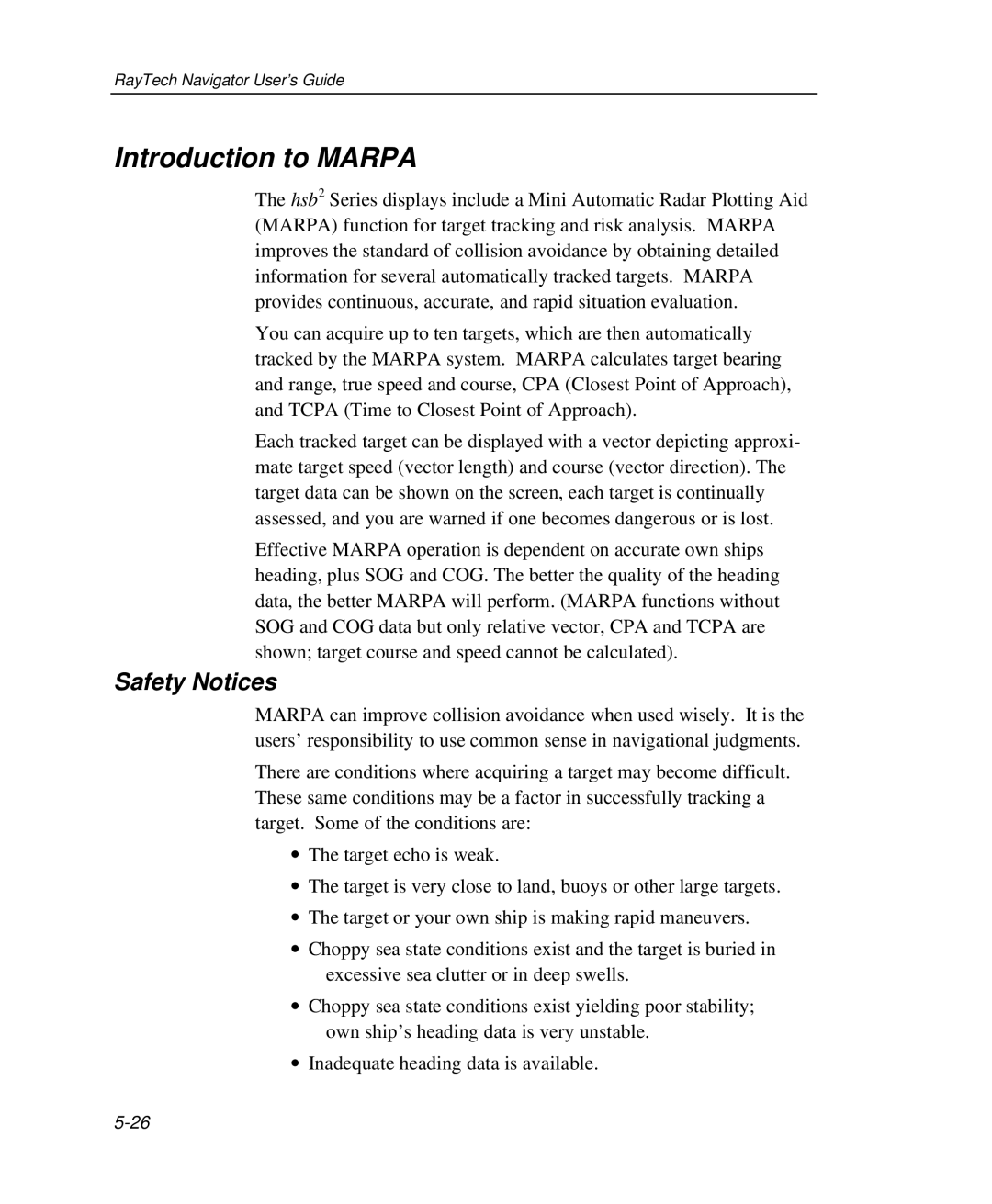RayTech Navigator User’s Guide
Introduction to MARPA
The hsb2 Series displays include a Mini Automatic Radar Plotting Aid (MARPA) function for target tracking and risk analysis. MARPA improves the standard of collision avoidance by obtaining detailed information for several automatically tracked targets. MARPA provides continuous, accurate, and rapid situation evaluation.
You can acquire up to ten targets, which are then automatically tracked by the MARPA system. MARPA calculates target bearing and range, true speed and course, CPA (Closest Point of Approach), and TCPA (Time to Closest Point of Approach).
Each tracked target can be displayed with a vector depicting approxi- mate target speed (vector length) and course (vector direction). The target data can be shown on the screen, each target is continually assessed, and you are warned if one becomes dangerous or is lost.
Effective MARPA operation is dependent on accurate own ships heading, plus SOG and COG. The better the quality of the heading data, the better MARPA will perform. (MARPA functions without SOG and COG data but only relative vector, CPA and TCPA are shown; target course and speed cannot be calculated).
Safety Notices
MARPA can improve collision avoidance when used wisely. It is the users’ responsibility to use common sense in navigational judgments.
There are conditions where acquiring a target may become difficult. These same conditions may be a factor in successfully tracking a target. Some of the conditions are:
∙The target echo is weak.
∙The target is very close to land, buoys or other large targets.
∙The target or your own ship is making rapid maneuvers.
∙Choppy sea state conditions exist and the target is buried in excessive sea clutter or in deep swells.
∙Choppy sea state conditions exist yielding poor stability; own ship’s heading data is very unstable.
∙Inadequate heading data is available.
